Our Lal Miah: The peasant artist
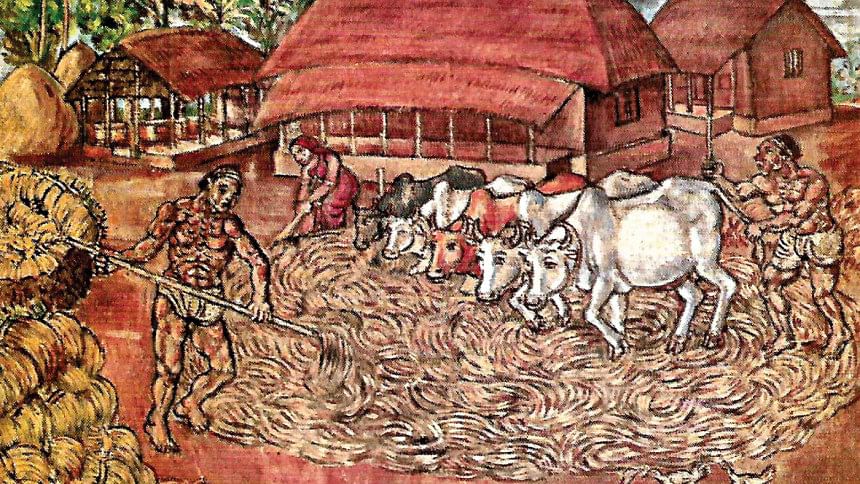
Whenever I stand in front of those vast canvases of S M Sultan — or Lal Miah, as he was called — I try to grasp not only their artistic value, but also the incredible life their maker had lived. In both, I fail.
I fail in terms of 'understanding' art as I am no critic or connoisseur, with very limited knowledge and capacity in the field.
And I fail in the latter because of his inconceivable way of life and his spirit: a bohemian who sheltered in dilapidated buildings, an eccentric who lived amidst numerous cats and bats, a bachelor who played the flute and wore a sari, a mad genius whose works were displayed alongside those of global legends like Dali and Picasso, a recluse who did not have a care for fame or fortune.
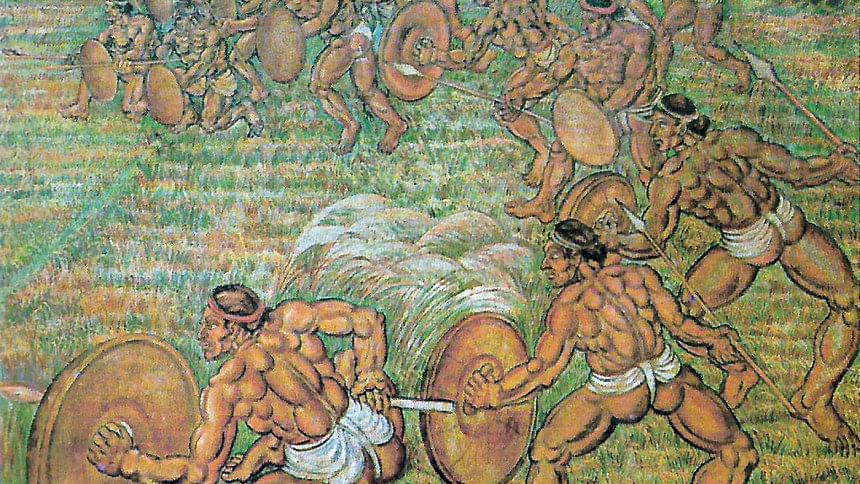
But this much I can comprehend, that behind all the techniques and '-isms' of arts and beyond all the eccentricities of the artist, there lies a soul deep in love with country and soil — for rural Bengal, the pastoral lifestyle, and the rights of farmers and peasants.
After all, a huge bulk of his paintings — his most iconic artworks, one may label them — feature farmers and whatever they stood for. A tribute to peasants and villagers; and he was one of them indeed:
"Many people tell me that if I lived in the city, I could have a better life... But when I encounter my fellow villagers in the market or other places, we talk together and I never feel alone. People appreciate me more here... If I draw a vegetable, they say, 'That's my vegetable!' If I draw a cow, they say, 'That's my cow!' This gives me deep feelings of peace and contentment."
Sultan's village portrayals are not mere landscapes. Yes, while they may evoke nostalgia and calm among many urbanites, reminding them of a simpler life of beautiful rural Bangladesh — farmlands, canals, thatched huts, villagers hard at work or spending a leisurely time — they are much more than that, as they tell stories of farmers' hard work and their joys and sorrows.
One of the first things anyone would notice in the paintings is the distinctive human forms. Sultan's farmers are strong and overly muscular and burly. Why did he choose to depict them as such?
"It's really hard for them to earn a decent meal despite working all day long. If I were to paint them realistically, I'd have to portray them as thin and malnourished. But in my mind, I don't see them that way. They are always ready to face any struggle. That's why they appear strong and masculine, to show that they are healthy and physically fit."
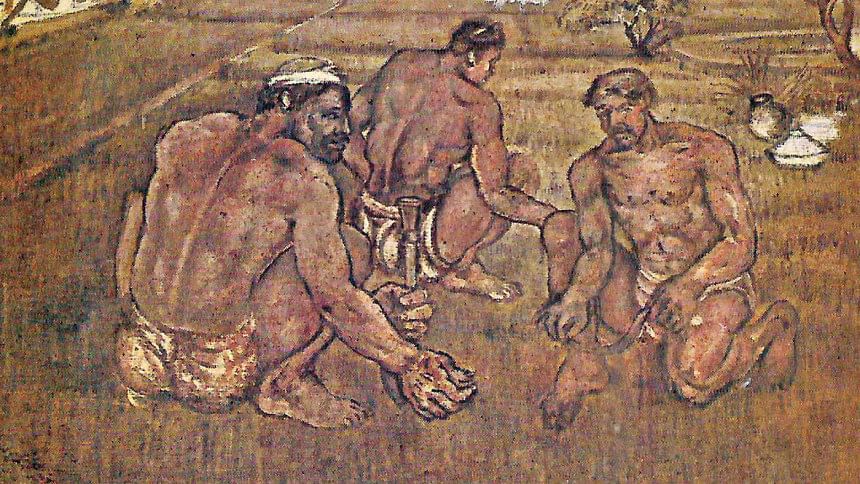
Sultan's cause was that of the Bengali peasantry — their rights and the respect they deserve but often do not get — and he brought forth this subject in immense beauty and splendour whilst himself being in touch with them.
He also taught drawing to poor children. As a child, he was no stranger to poverty, and his art school offered food to children and educated them in studying and drawing the Bengali flora and fauna; their village surroundings.
Sultan cared little for money and materialism. It may even be said that he, at times, neglected his own paintings; there had been instances when his works were found at use as a partition wall in a home or a false ceiling at a teashop!
So, while much has been explored, dissected, and discussed in the art world about the painter's creative process and his techniques and the technical aspects, the man himself seemed to have maintained a certain distance from it all. Instead, Lal Miah's art was for the common people:
"My fellow countrymen are not used to abstract art. They ask, 'What have you painted? Please explain it to us, we don't understand'... As I have seen these days, most drawing rooms have an abstract painting on the wall. This has a certain decorative value... But in my eyes these works are not important because general people can't easily grasp them."
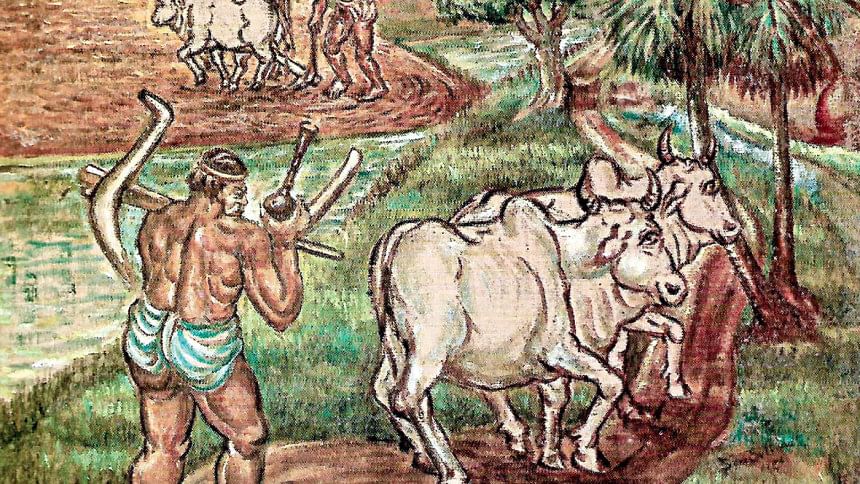
His love for the common people is evident; his connection with them, strong and intimate. And with an immense zeal for rustic Bangladesh, he glorified the common farmer. He was a patriot.
And all these turned Sheikh Mohammed Sultan — legendary artist and an odd, untamed man — into a household name in Bangladesh; simply, S M Sultan the mad genius, or perhaps more intimately, our Lal Miah.
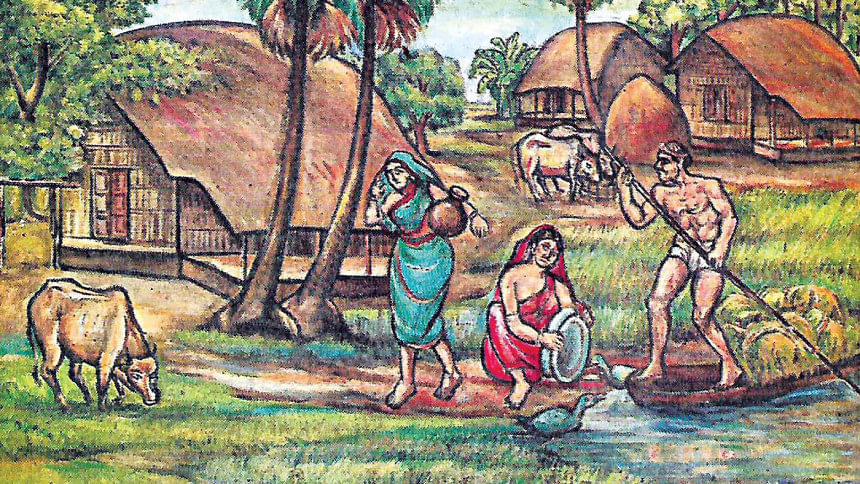
'Adam Surot: The Inner Strength', a documentary film by Tareque Masud on S M Sultan (and an extended book of the same title first published by Bengal Foundation) has been used for the artist's quotes and other information.
Illustration: Collected from Art of Bangladesh, Series 4, S M Sultan, published by Bangladesh Shilpakala Academy

 For all latest news, follow The Daily Star's Google News channel.
For all latest news, follow The Daily Star's Google News channel. 



Comments